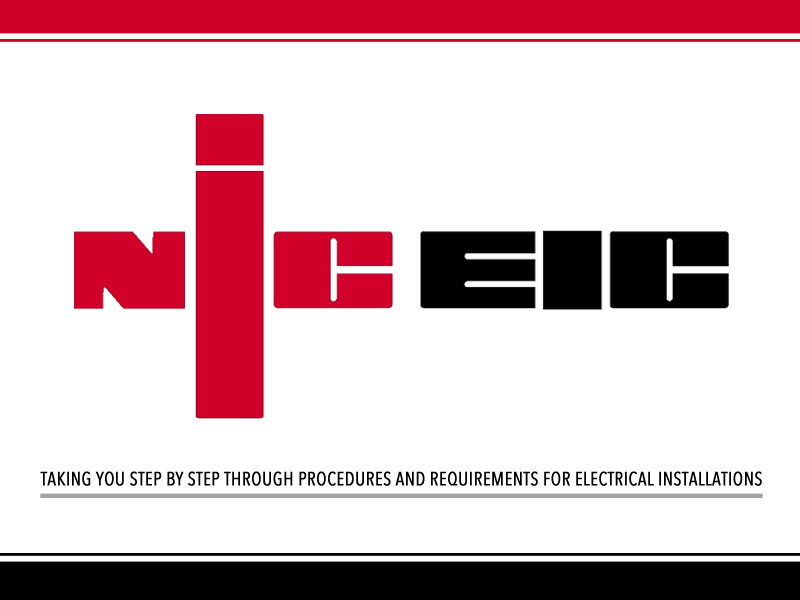
This article looks at some of the main aspects included in an NICEIC Domestic Electrical Installation Condition Report (DEICR).
Periodic inspection of a domestic installation may be required for a range of reasons, such as providing evidence of the condition of an installation as part of a sale or rental agreement or because the installation has been exposed to damage caused by fire or flood. The details recorded during the assessment are used to determine whether the installation is safe for continued service.
Details and limitations of the inspection and testing
For the benefit of both the client and the contractor responsible for the inspection, it is essential that the full details of those parts of the installation included in the inspection are accurately recorded (Regulation 653.2). If the full extent is not correctly identified, the contractor issuing the Report is likely to have assumed responsibility for areas or parts of the installation not covered by the inspection.
Only limitations that can be technically justified and have been agreed with the client prior to the inspection, including the reasons, should be recorded on the Report. In addition, the name of the person agreeing the limitations should also be recorded.
Sampling
For installations comprised of small numbers of circuits, such as typical domestic premises, the process of sampling is normally applicable to the inspection element of the work only. As a minimum the following inspections should be made:
• external inspection of all accessible electrical equipment such as accessories and consumer units,
• internal inspection of every consumer unit,
• close inspection of terminations and connections at a representative number of items (approximately 20 %) of electrical equipment on every final circuit and, particularly where the external visual inspection has raised concerns.
Irrespective of the installation type, sampling should never be applied to the incoming supply arrangements or the earthing and bonding arrangements.
Operational limitations including the reasons
In some circumstances, generally as a result of being unable to gain access to a particular part, area, or room in the installation (as shown in Fig 2) the inspector may be prevented from performing inspection and testing in all the areas agreed with the client. Where this is the case, it is essential that the relevant details are recorded so that the client can arrange for inspection and testing to be undertaken in such areas at an appropriate time in the near future.
Note: Undertaking a pre-inspection survey of the installation is strongly advised, wherever possible, to discuss and agree items such as limitations and sampling.
Observations
Details of any damage, deterioration, defects or dangerous conditions should be recorded (Regulation 651.4). The observation should detail what the situation is, and not what is considered necessary to put it right. Observations are intended to provide the client with a factual report on the condition of an installation, not a proposal for remedial work. For example, ‘excessive damage to the enclosure of the consumer unit’ would be appropriate, whereas ‘consumer unit to be replaced’ would not. Only observations that may give rise to danger should be recorded; those based solely on personal preference or ‘custom and practice’ should not be included.
Classification codes
Only one Classification code should be attributed to each observation, and where more than one code is applicable to an observation, only the most onerous Classification code should be recorded. Should any observation be attributed a Classification code C1 or code C2, the overall outcome of the assessment must be recorded as ‘unsatisfactory’.
Further investigation
Further investigation should not be called for unless the inspector has reason to believe that further investigation is likely to reveal danger or potential danger that, due to the agreed extent of the inspection and/or testing, could not be fully identified at the time. Therefore, if further investigation is required, the overall assessment of the condition of the installation must be recorded as being ‘unsatisfactory’. The person ordering the inspection should be advised that any observations for which further investigation is considered necessary should be investigated as a matter of urgency after the inspection.
Next inspection
In accordance with Regulation 653.4, an appropriate recommendation for the time interval to the next inspection should be inserted and accompanied by a brief supporting statement. The period should take into account any legislative requirements, the results and recommendations of previous certificates and reports and the level of maintenance the installation is likely to receive (Regulation 652.1).
Issuing the Report
Regulation 653.5 requires Electrical Installation Condition Reports to be compiled, signed and authenticated by skilled persons competent in such work. For NICEIC report forms, the registered Qualified Supervisor (QS) is responsible for reviewing the Report to confirm that it is compiled accurately before being issued to the person ordering the work (Regulation 653.6).











